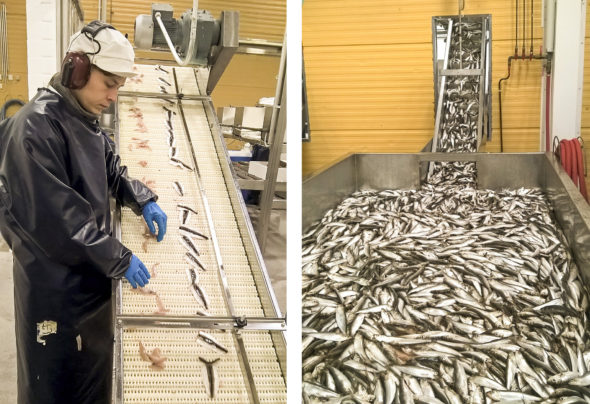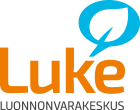Fishing
The key principle in the sustainability of fishing is that commercial fishing complies with the rules approved by the authorities at national and EU level.
The key species of sea fishing catches are herring and sprat. The fishing quotas for the Baltic Sea are determined on the basis of the status of fish stocks. The herring quotas for the Gulf of Bothnia have increased every year until now, reaching record high levels in 2017. In its meeting in the autumn of 2017, the Agriculture and Fisheries Council decided to cut the Gulf of Bothnia Baltic herring quota by 40%. This will reduce the quota to approximately 69 million kilos. The Baltic herring quota for the whole of Finland will drop from more than 170 million kilos in 2017 to about 114 million in 2018, which is close to the long-term standard level.
The private MSC (Marine Stewardship Council) certification process for Baltic herring and sprat is almost complete, and is likely to be finalised by the end of February 2018. The value and significance of the MSC certificate has been increasing and this has been taken into account in international trade.
A preliminary assessment of the sustainability certificate has also been completed for vendace, the most important fish species in inland waters. The preliminary assessment group found that the trawl fishing and purse seining of the Saimaa (Finnish) vendace probably complies with the MSC principles and criteria for sustainable fishing, and recommended a broader assessment. The sustainable annual yield of Finnish lakes is 8-13 million kilos of vendace, while the total catch of professional fishing in 2014 was 2.8 million kilos. These figures indicate that vendace fishing is ecologically sustainable.[1]
Compared to many alternative sources of protein, the nutritional value of Baltic Sea fish is clearly higher and the ecological footprint of fishing and processing is lower. Fishing removes significant amounts of phosphorus and nitrogen from the Baltic Sea and inland waters.
Fish farming
Fish farming is a licensed, strictly regulated and controlled business activity. Farming establishments are located both in the sea and inland waters of Finland. The newest form of fish farming, recirculating aquaculture, involves the recycling and cleaning of the water used.
The fish farming sector manages its environmental, economic and social responsibilities both in business and fish production methods. Farmers comply with high ethical values, including animal welfare and environmental protection regulations, the degree on the protection of cultivated fish and occupational safety regulations. Water protection is integral to modern fish farming.
A clean environment is important to fish farmers, because fish thrive and grow better in clean water. The total and specific nutrient loads from fish farming have declined considerably since the early 1990s, by more than 70%. Today, the phosphorus load from fish farming only accounts for 1.8% of the total phosphorus load in waterways due to human activities.
Fish farms require a permit under the Environmental Protection Act. The permit defines the production volume of the farm unit, in such a manner that fish farming does not endanger the condition of water bodies. Regular monitoring of the status of water bodies is important to environmental impact assessment. The environmental nutrient load mostly originates in fish feed. Fish feed in Finland has become highly advanced in recent years. The efficient use of feed is both environmentally friendly and contributes to economic profitability. Fish utilise their feed extremely efficiently: a fish grows by approximately one kilo for each kilogramme of feed, which gives it a small carbon footprint for production.
Some 14.4 million kilos of fish were farmed for human consumption in Finland in 2016. The 13.4 million kilogrammes of rainbow trout produced accounts for over 90% of total fish production for human consumption. Just under 0.8 million kilogrammes of farmed whitefish almost equals the figures for the previous two years. The total quantity of other farmed fish species – trout, Arctic char, sturgeon, pikeperch and eel – amounted to around 0.2 million kilogrammes. About half a million kilos of rainbow trout roe was produced for food.
Sustainable fisheries are a domestic option
Imports of fresh whole salmon from Norway and Sweden totalled over 35 million kilogrammes, or 2.5 times more than domestic farming production. It is possible that domestic rainbow trout farming will replace salmon imports from Norway in the next few years. Were fish feed made from Baltic herring used in the farming of rainbow trout, high quantities of nutrients would be removed from the Baltic Sea in the raw material used for feed. Fish meal made from imported fish could be replaced with meal made from Baltic fish, which would recycle nutrients from the Baltic Sea. The phosphorus load from fish farming has been about 60 tonnes and the nitrogen load 507 tonnes annually. The use of fish feed from the Baltic Sea would remove 75 tonnes of phosphorus from the Baltic Sea, which is more than the load from fish farming, and the nitrogen load would decrease by 377 tonnes.

Photos: Jari Setälä
Fish feed from the Baltic Sea facilitates sustainable fish farming in Finland. Of the 137 million kilos of herring caught from the Baltic Sea in 2016, only about 3% were used as food in Finland and the rest as raw material for fish meal, feed for fur animals or exported as food. Approximately one third was used for the production of fish meal and more than half as feed for fur animals in Finland or Denmark. The new fish meal plant in Kemiönsaari separates dioxin from the raw material, herring and sprat, preventing dioxin from entering the plant’s end product, the fodder.[2]
Despite the cut in the Baltic herring quota, from the viewpoint of fish feed availability there is room for increased fish farming in the Baltic Sea. This would provide consumers with rainbow trout refined from herring as a more ecological domestic fish option. Environmental permits, which are difficult to obtain, still constitute the major bottleneck to achieving this goal.
Links
Natural Resource Institute Finland, Statistics, Commercial marine fishery, Link
Natural Resource Institute Finland, Statistics, Commercial inland fishery, Link
Natural Resource Institute Finland, Statistics, Aquaculture, Link
Suomen Ammattikalastajaliitto SAKL
Suomen Kalankasvattajaliitto ry
East Finland Fisheries Local Action Group
References
[1] Marjomäki, T., Keskinen, T. & Karjalainen, J. (2016) The potential ecologically sustainable yield of vendace (Coregonus albula) from large Finnish lakes, Hydrobiologia, Springer International Publishing Switzerland 2016, Link to article
[2] Meriläinen, P., Salminen, J., Britschgi, R., Nystén, T. & Pitkänen, T. (2017) Preliminary survey of risk management and opportunities associated with water use in communities and food production. National Institute for Health and Welfare (THL). Discussion Paper 32/2017. 46 pages. Helsinki 2017. Link to report
Photo in upper edge: Aarno Isomäki
